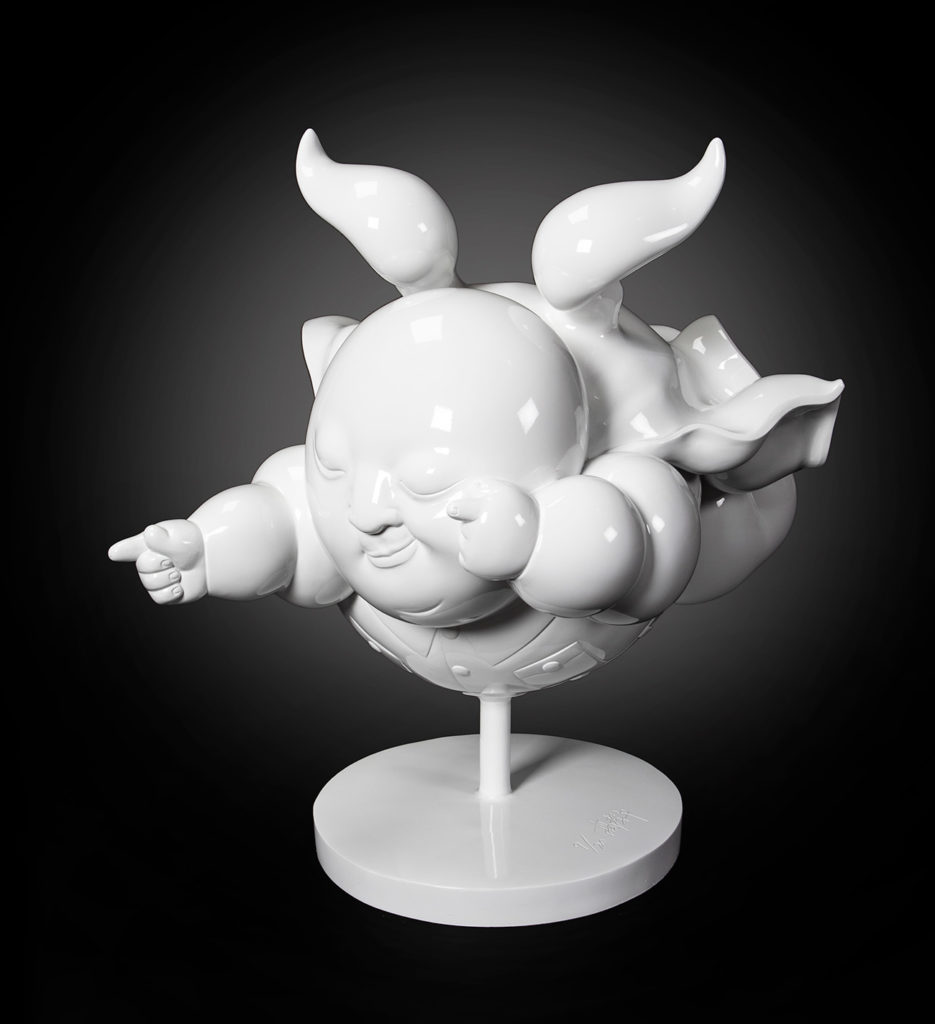The idyll of the western art market with contemporary Chinese art.
For a few decades now, Chinese contemporary Chinese art began a period of expansion and internationalization that is reflected in the growing interest it aroused in the Western art scene. . In a relatively short period of time, contemporary Chinese art went from being practically invisible and unknown to the general public to being present, starting in the 90s, in a large number of artistic scenarios worldwide. Its definitive explosion took place during the first decade of the 21st century, at which time it emerged from its rather underground consideration to position itself in a privileged place within the competitive Western art market where its value will be increasingly greater.
The success that you will experience ever since, translates into a feverish race to commercialize the most representative works of this art which, reaching its highest levels in recent years, has managed to become a regular protagonist of the most prestigious international auctions. Without going any further os, Christie’s and Sotheby’s went from sporadically bidding some of these pieces to holding periodic auctions devoted entirely to contemporary Chinese art . This phenomenon. It is not surprising if we take into account some of the results obtained in these first years of the new millennium, when the price of artists like Zeng Fanzhi soared to $ 9,703,490 at Christie’s in the year 2008.

The idyll of contemporary Chinese art with the Western market finds its origin in the reform and opening-up policy of the Chinese regime that, after the death of Mao Zedong in 1976, was promoted by Deng Xiaoping in 1978. From then on, China will enter into a process of social and cultural political transformation in which it will progressively become aware of the power that contemporary art can exercise in the international arena. After a long period dominated by cultural isolation and political instrumentalization, the will and freedom of experimentation demanded by the new generations of artists opened the way to the new artistic context that little by little opened up in front of them, assimilating and introducing new ways of doing. and understand art hitherto unknown to them. Leaving behind an art corseted in the grandeur of political propaganda, a period of great creative wealth began, marked by the influence of movements such as expressionism, surrealism, dadaism, conceptual art or techniques such as creative photography, happening, performance or video. In this way, trends as diverse as cynical realism, Gaudy art or Apartment art proliferated where the contradictions and tensions of the country became the optimal setting that gave birth to an art that has swept the artistic circuits around the world.
During the 90s, this renewed vision of artistic practice, originating from the marriage between new artistic trends from the Western world and the idiosyncrasy of Eastern culture itself, attracted the gazes of the great European and American collectors. . Since then, there have been many galleries dedicated to its dissemination and commercialization, both within their own country and outside its borders, where the participation of these artists in the great European Biennials proliferated. Likewise, the first exhibitions aimed at the general public arrived in the West, which in many cases were made up of those collections started in the 1990s by European and North American diplomats and businessmen.
This revolutionary change that oriental art underwent has irreversibly marked the course of current artistic practice in the Japanese country, as evidenced by the works that Setdart will tender on June 17.
In this sense, Shen Jindong is undoubtedly one of the most successful international artists as reflected in the results that his works reach at auction, amounting to 154,000 pounds in 2013. His work represents a paradigm shift with respect to the previous critical component of cynical realism, giving way to an aesthetic close to pop art marked by its obvious playful and playful sense. The characters with childish faces and affable attitudes that populate his works make up a kind of fairy tale that reflects the artist’s optimistic vision of social transformations based on consumerism and mass culture, where ordinary people will be the new heroes of the world. Present . As in “littlegirl”, its characters seem to embrace the promises and opportunities presented by the cultural openness of the country, received as in this case, with open arms and symbolic wings.
In line to the kind and optimistic image of Chinese life and culture, Gao Xiao develops his work and especially his sculpture within the Animamix trend . Debt to the aesthetics of comics and cartoons, her work is inspired by everyday life, avoiding political symbols and totems to focus her work on issues related to the notion of happiness. In works such as “Dreams Return N.1” (35250693), the soft silhouettes of rounded shapes allude to a state of grace and fullness that represents the search for happiness that every being pursues and we achieve with total when we enrich our souls above our own. physical body. This type of work has led him to be present in both group and individual exhibitions, as well as in some of the most prestigious international collections.

Despite the crisis and the logical readjustment and stabilization of the exorbitant prices reached during the first years of this century, contemporary Chinese art has managed to consolidate the fascination that it aroused among the most demanding international collectors who have significantly contributed to the acceptance of these artists by status of true stars of the current artistic circuit.


